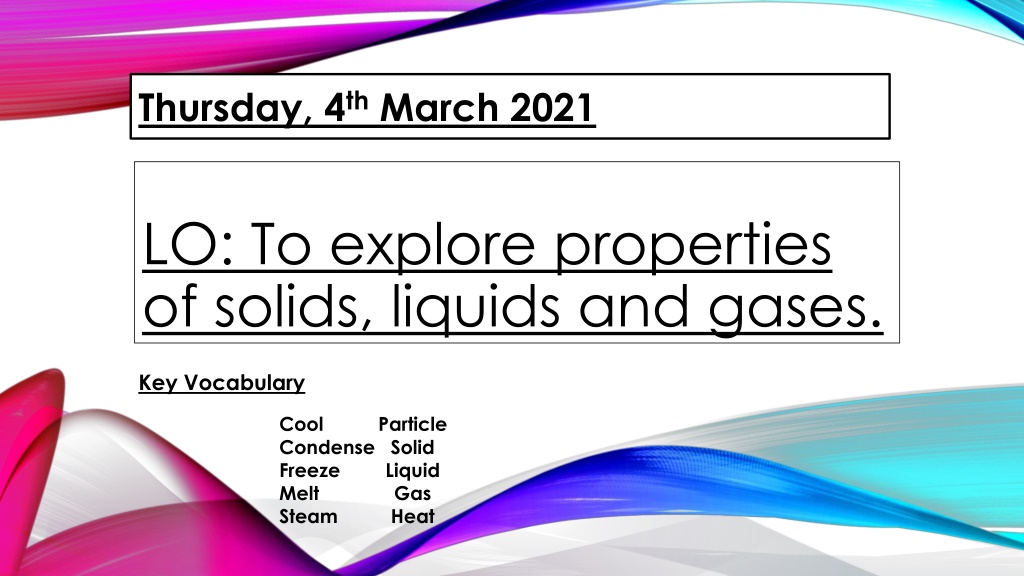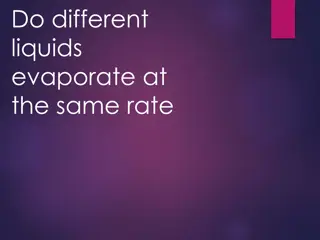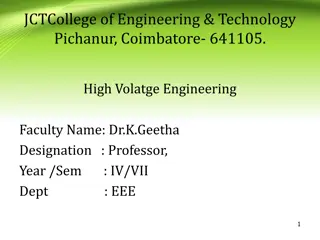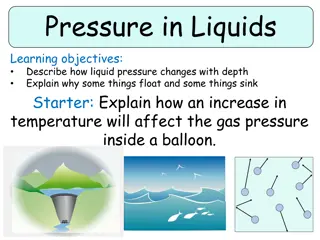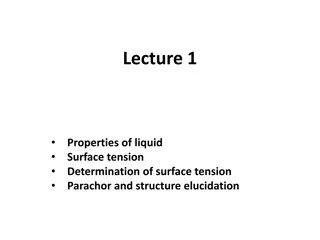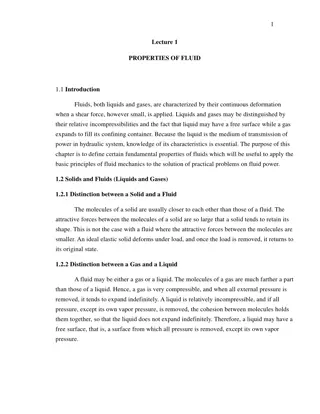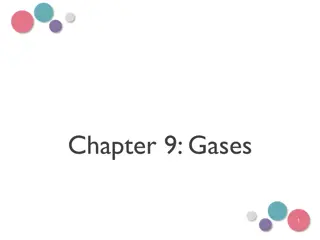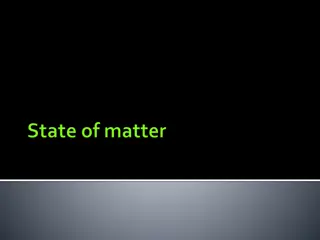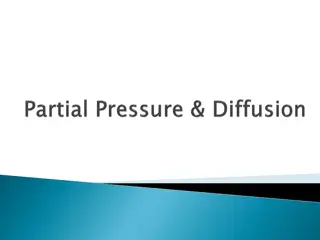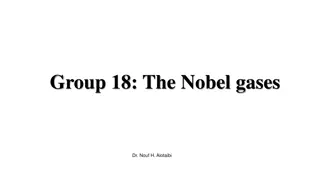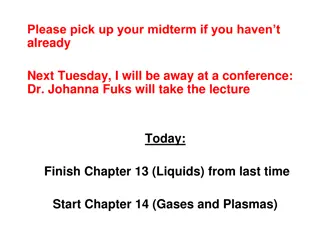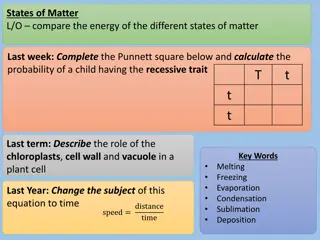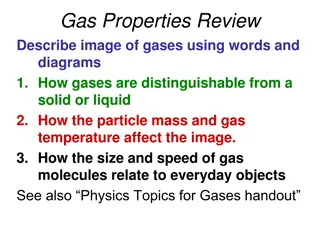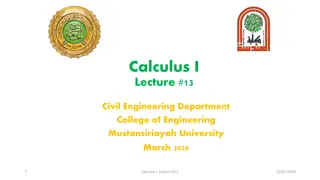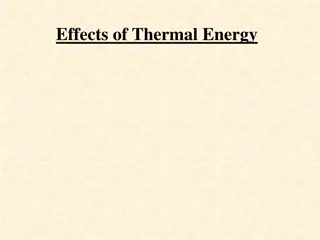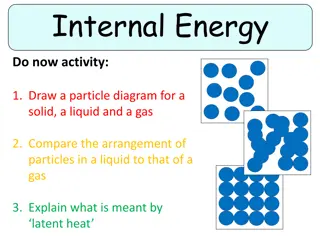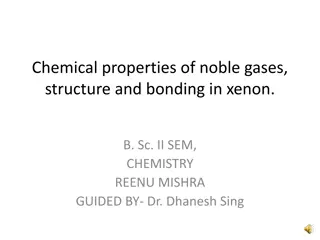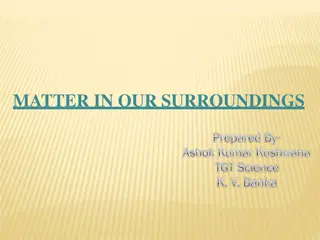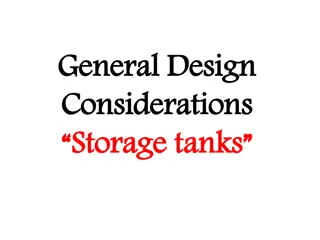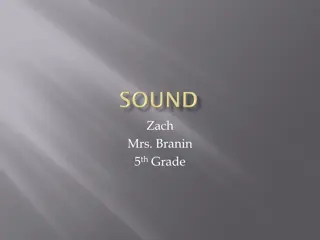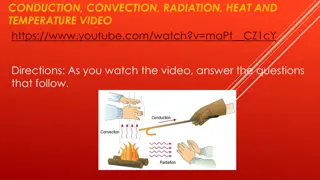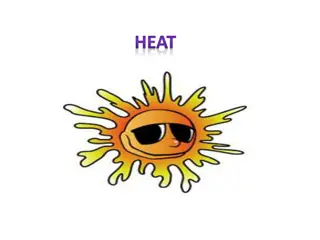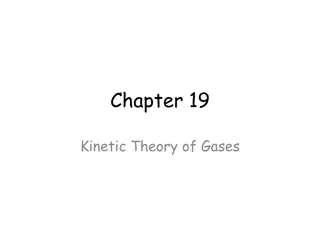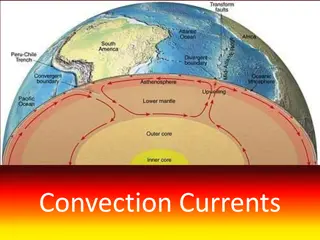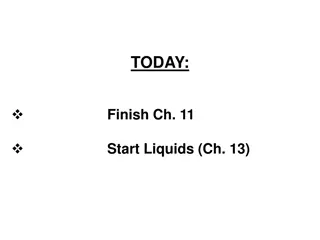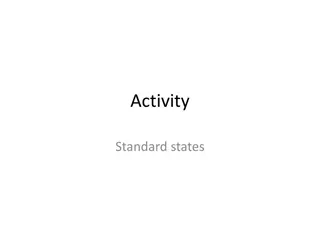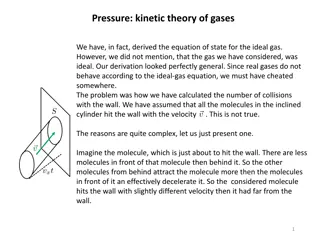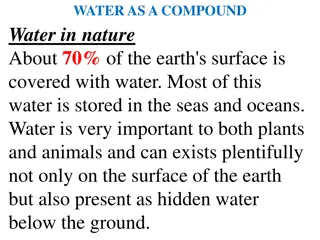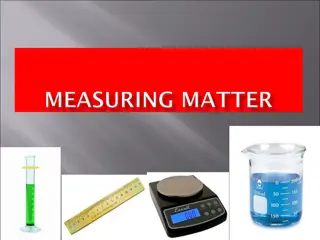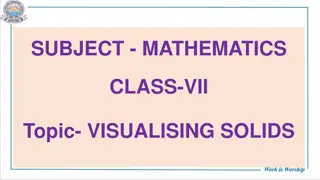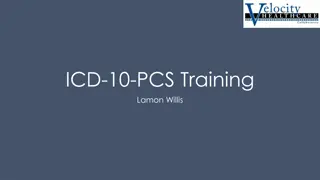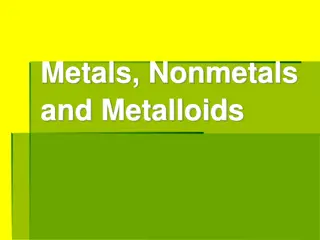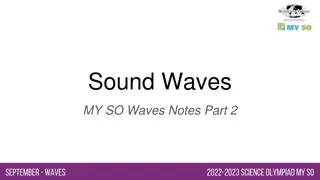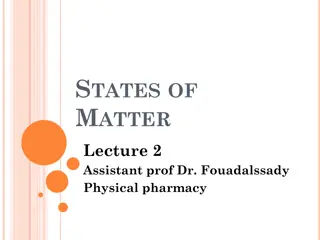Exploring Properties of Matter: Solids, Liquids, and Gases
Dive into the characteristics of solids, liquids, and gases through engaging visuals and key vocabulary. Understand the behavior of particles in different states of matter and learn about the properties that define each state. Explore examples of solids, liquids, and gases with a focus on their unique attributes and shapes.
Download Presentation

Please find below an Image/Link to download the presentation.
The content on the website is provided AS IS for your information and personal use only. It may not be sold, licensed, or shared on other websites without obtaining consent from the author. Download presentation by click this link. If you encounter any issues during the download, it is possible that the publisher has removed the file from their server.
E N D
Presentation Transcript
Thursday, 4th March 2021 LO: To explore properties of solids, liquids and gases. Key Vocabulary Cool Condense Freeze Melt Steam Particle Solid Liquid Gas Heat
STATES OF MATTER What are the states of matter? - BBC Bitesize
STATES OF MATTER Matter can be one of three states. They are Solid, Liquid and Gas. Matter is something that occupies space and has weight.
STATES OF MATTER States of Matter Solid Liquid Gas Pe n wate r Box Air Steam Ink
TASK 1 Oxygen Water Ice cube Milk Apple Butter Steam Petrol Carbon dioxide Honey Sand Wood
PARTICLES The behaviour of particles in solids, liquids and gases - KS2 Science - BBC Bitesize
SOLID Solids have the fixed shape. It is hard and firm. It changes its shape by giving force or pressure.
LIQUID Liquid do not have the fixed shape. It takes the shape of the container. It flows.
GAS GAS has no definite shape. Gases take the shape of whatever container they are in. The air all around us is a gas
TASK 2 Describe the three states of matter and name some examples of each. Think about the properties of each state Describe how particles behave in each state.
EXPERIMENT Dear Form 4, My name is Professor Nafisa Compton, and I am a physicist. In my job, I am constantly discovering new things, but it is not every day a professor of physics gets to make an exciting, ground-breaking, completely new discovery! In my kitchen, I was making custard. I am good at science, but terrible at cooking (practice makes perfect!), and I read the recipe wrong! Instead of custard, I ended up with a strange substance. It is hard to explain exactly what is strange about it - I am hoping you will find out for yourselves shortly. The problem is, I cannot figure out whether this substance is a solid, liquid or a gas. I am writing to all the local schools to see if some classes can help reproduce my investigation, and report their findings. Perhaps you will also discover something exciting! I have called this substance Oobleck, after my favourite Dr. Seuss book - but you can call it anything you like. Thank you in advance for your help, Professor Nafisa Compton.
OOBLECK Let s Make Oobleck! Sometimes a substance has properties that make it more challenging than usual to determine whether it is a solid, a liquid or a gas. This is the case with a very unusual substance nicknamed oobleck. This substance gets its name from a Dr. Seuss story in which it appears. Carry out this investigation and put your states of matter knowledge to the test. Will you make a solid, a liquid or something totally new? Have fun and take care not to get too messy when making oobleck.
SOLID OR LIQUID? EXPERIMENT Make the substance called oobleck. Mix two cups of cornflour with 1 cup of water, you can add food colouring if you wish. Play with the substance you have created. Do you think this substance is a liquid or a solid based on what you have learnt today about the properties of each? Give reason for your thoughts.
PLENARY FILL IN THE GAPS Every material is made up of lots of ____ particles. All materials are either solid, liquid or a ___. In a _____ all the particles are packed tightly together and can hardly move. A solid stays in its own _____ unless we cut it or shape it ourselves. Anything you can take hold of is a _____. The _______ in a liquid are not so tightly packed. They can ____ a little. Liquids are _____ and flow downwards. They take the shape of the _________ they are in. The surface of a liquid stays _____. The particles in _____ have lots of room and move around all over the place, all the time. Gases are all ______ us spreading into any empty space they can. Most gases are _________. Missing Words gases particles move shape solid runny tiny gas solid invisible around level container
